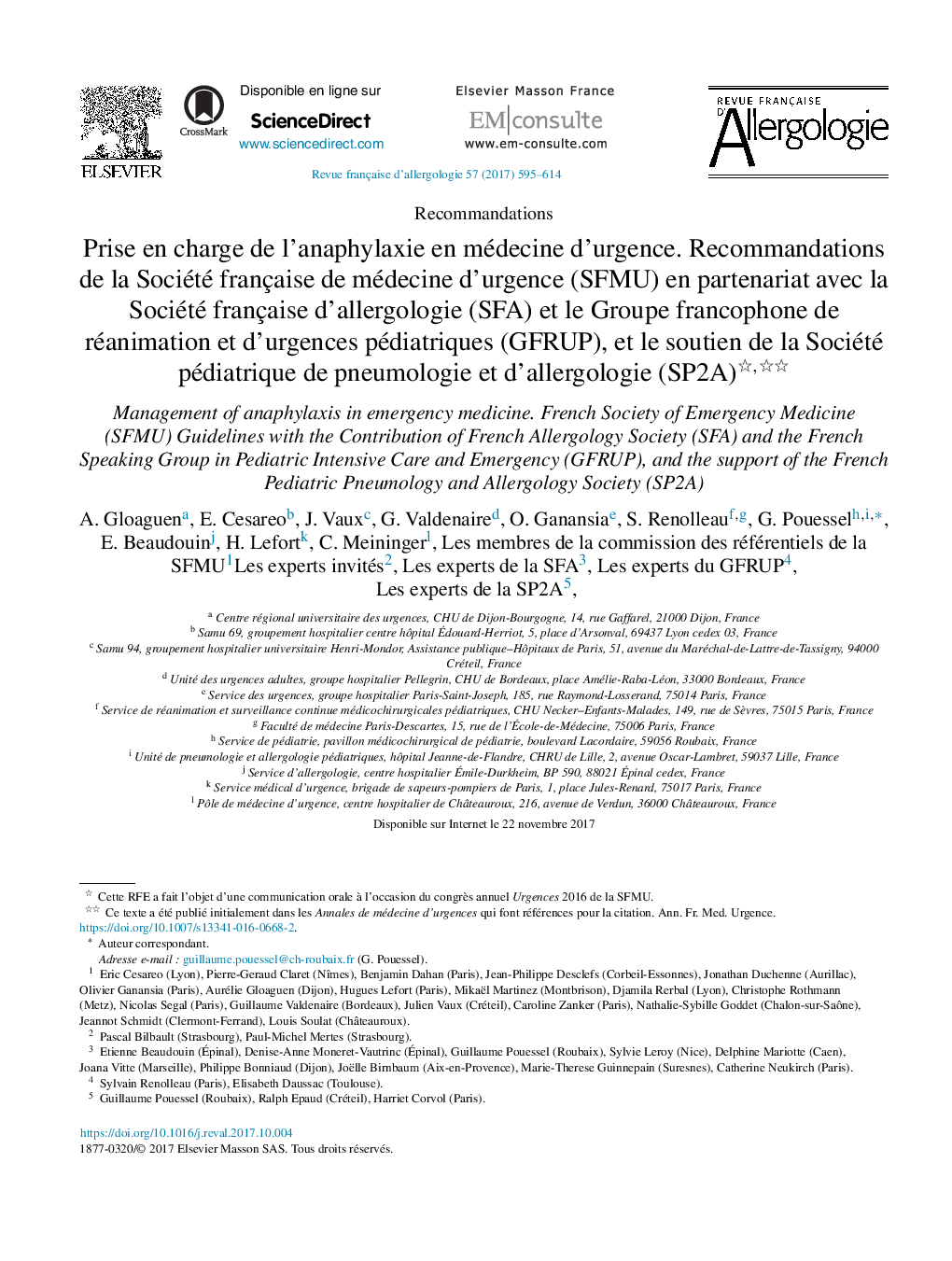| کد مقاله | کد نشریه | سال انتشار | مقاله انگلیسی | نسخه تمام متن |
|---|---|---|---|---|
| 8743202 | 1592524 | 2017 | 20 صفحه PDF | دانلود رایگان |
عنوان انگلیسی مقاله ISI
Prise en charge de l'anaphylaxie en médecine d'urgence. Recommandations de la Société française de médecine d'urgence (SFMU) en partenariat avec la Société française d'allergologie (SFA) et le Groupe francophone de réanimation et d'urgences pédiatriques (
دانلود مقاله + سفارش ترجمه
دانلود مقاله ISI انگلیسی
رایگان برای ایرانیان
کلمات کلیدی
موضوعات مرتبط
علوم پزشکی و سلامت
پزشکی و دندانپزشکی
ایمونولوژی، آلرژی و روماتولوژی
پیش نمایش صفحه اول مقاله

چکیده انگلیسی
These formalized expert guidelines were written by the French Society of Emergency Medicine (SFMU), in partnership with the French Allergology Society (SFA) and the French Speaking Group in Pediatric Intensive Care and Emergency (GFRUP), and the support of the French Pediatric Pneumology and Allergology Society (SP2A). Their goal is to educate emergency physicians to early diagnosis of this potentially fatal reaction of severe hypersensitivity, the specific features associated with age, and risk factors identification. Anaphylaxis diagnosis is clinical and used Sampson's clinical criteria. The authors offer helps sheets for emergency medical services dispatch and triage criteria for emergency department nurses. As underlined by the international guidelines, the main treatment is early administration of intramuscular epinephrine. If an epinephrine auto-injector is available, the emergency medical services dispatch center on-call physician (112-call) should encourage its immediate use. The second line of treatment is based on the eviction of the triggering factor, the appropriate waiting position, oxygen therapy, and depending on the symptoms, fluid therapy, bronchodilator and epinephrine nebulization. The severity of the prognosis and the unpredictability of developments justify the deployment of a mobile intensive care unit. A minimum six-hour hospital observation is indicated. Tryptase kinetics evaluation contributes to a posteriori diagnosis. At emergency department discharge, the patient must have a prescription of an emergency kit (containing two epinephrine auto-injectors and β2-agonists), written instructions and a detailed written hospital report. A specialized consultation with an allergologist is essential after the emergency department discharge.
ناشر
Database: Elsevier - ScienceDirect (ساینس دایرکت)
Journal: Revue Française d'Allergologie - Volume 57, Issue 8, December 2017, Pages 595-614
Journal: Revue Française d'Allergologie - Volume 57, Issue 8, December 2017, Pages 595-614
نویسندگان
A. Gloaguen, E. Cesareo, J. Vaux, G. Valdenaire, O. Ganansia, S. Renolleau, G. Pouessel, E. Beaudouin, H. Lefort, C. Meininger, Les membres de la commission des référentiels de la SFMU Les membres de la commission des référentiels de la SFMU,